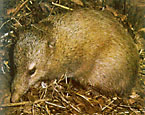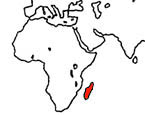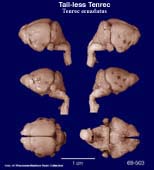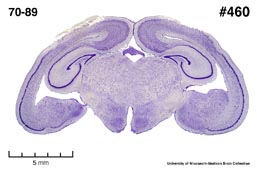|
Tail-less
Tenrec
(Tenrec ecaudatus) #70-89 |
||||
|
|
Physical
characteristics and distribution
|
|
The head and body length is approximately 265-390 mm. Weight
in captivity ranges from 1.6-2.4 kg. Color varies from grayish
brown to reddish brown, with some individuals having dark brown
backs and rumps. The pelage is not dense and consists of hairs
and spines. Strong white spines arranged longitudinally on the
backs of young Tail-less Tenrec are replaced by a crest of rigid
hairs in adults. They are found in all latitudes and phytographic zones: eastern humid forest, central highlands, northern highlands, sambirano, western deciduous forest, and spiny bush in Madagascar; and the Comoro Isls. Introduced on Renunion, Mauritius, and the Seychelle Isls. |
|
Description
of the brain
|
|
Animal
source and preparation
|
|
All specimens collected followed the same preparation and histological procedure.
|
Other Related Resources (websites and publications)
List of Specimens | Explore Collections | Brain Sections | Brain Evolution | Brain Development | Brain Circuitry | Brain Functions | Location and Use | Related Web Sites | Contact Us | Search MSU Database | Personnel | Home



